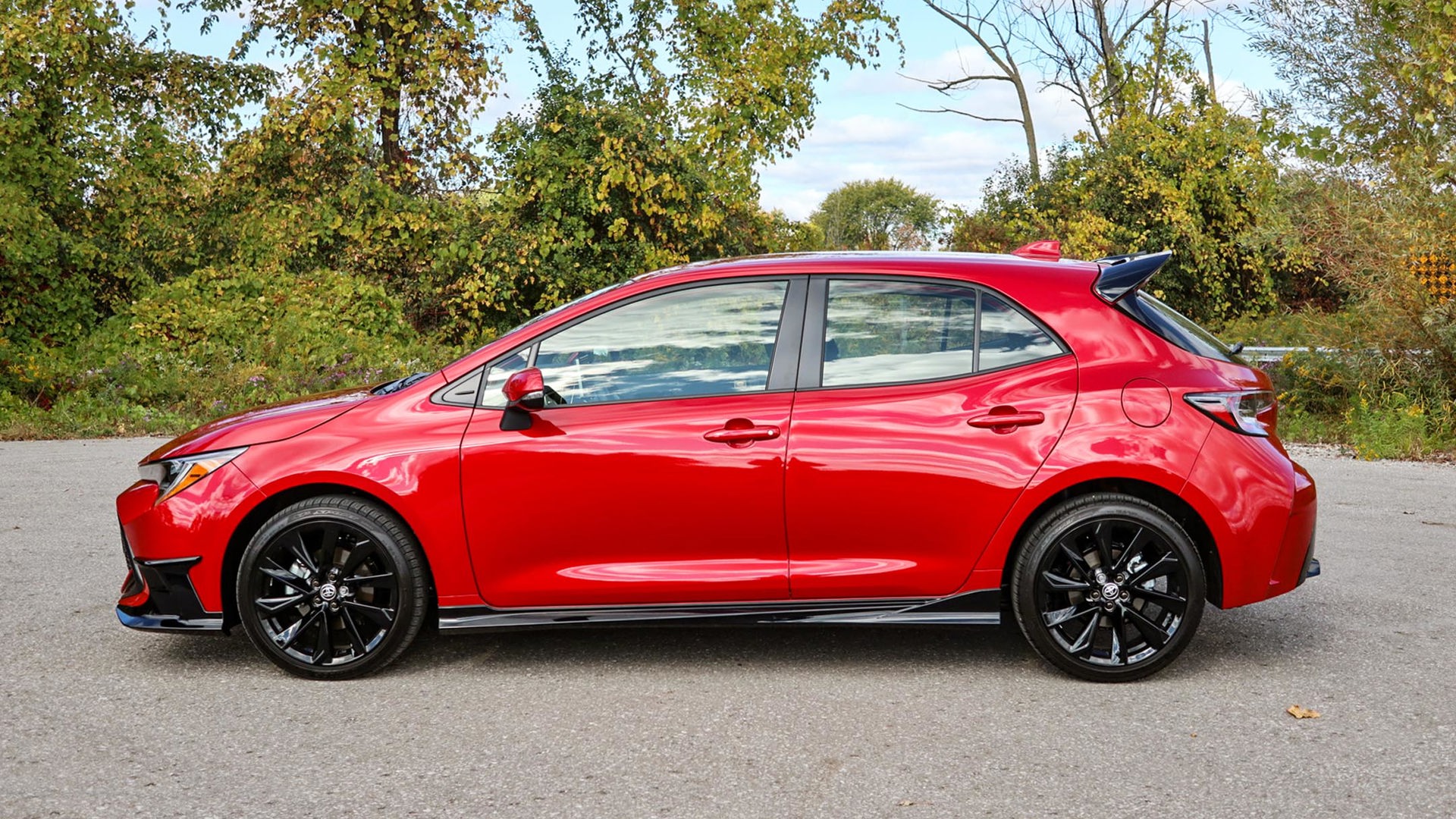Buying a vehicle that can reliably handle high mileage is a goal for many drivers. Whether you commute long distances daily, enjoy road trips, or simply want a car that will last for years without demanding a fortune in repairs, the ability to keep a car running efficiently for well over 150,000 miles is a significant consideration.
However, while some vehicles are engineered to endure the test of time with minimal maintenance costs, others become financial burdens as their mileage climbs. Understanding the nuances between these two groups can save car owners thousands of dollars, frustration, and stress over the lifespan of their vehicle.
High-mileage cars that stay cheap to maintain typically share several key traits. They tend to have simple, robust mechanical designs that avoid overly complicated systems prone to failure. These cars are often backed by manufacturers known for building reliability and durability into their core philosophy, such as Toyota and Honda.
Their parts are widely available, making replacements affordable and repairs easier to execute. In addition, these vehicles usually offer straightforward service procedures, so mechanics (and even knowledgeable owners) can perform routine maintenance without requiring specialized tools or lengthy labor times.
Fuel efficiency, long-lasting drivetrain components, and solid suspensions also contribute to keeping ownership costs down. When combined, these factors help ensure that the cost of ownership remains manageable even after crossing the 100,000 or 150,000-mile threshold.
On the other hand, high-mileage cars that don’t stay cheap to maintain often come from the luxury or high-performance segments. These vehicles feature advanced technology, sophisticated electronics, and complex mechanical components designed to enhance performance, comfort, or style but at the expense of reliability and ease of maintenance.
Luxury brands like BMW, Audi, and Mercedes-Benz are prime examples, with their cars offering premium materials and cutting-edge systems that often require specialized service knowledge and expensive parts.
As these vehicles age, their advanced electronics, intricate drivetrains, and sophisticated suspensions can begin to fail, leading to expensive diagnostic and repair bills.
These costs are further inflated by higher labor rates charged by specialized mechanics or dealerships, making maintenance a costly endeavor for high-mileage luxury cars.
The difference in ownership costs between these two categories can be stark. For instance, a Toyota Corolla owner might spend a few hundred dollars a year on routine maintenance and minor repairs even after 200,000 miles, while a BMW 3 Series owner could face several thousand dollars in repairs over the same period due to a failing cooling system or transmission issues.
This discrepancy is why understanding which vehicles tend to be inexpensive to maintain with high mileage—and which ones don’t—is essential for long-term car ownership planning. In this article, we will dive into five specific high-mileage vehicles that are known for their affordability in maintenance and five that often become expensive to keep on the road as they age.
We will explore why these cars behave the way they do, what owners can expect when their odometers climb, and how design, engineering, parts availability, and labor complexity play critical roles in shaping the cost of ownership.
Whether you are shopping for a used car with high mileage, trying to predict future maintenance costs for your current vehicle, or simply curious about automotive durability, this guide will provide valuable insights into the long-term economics of vehicle maintenance.
Ultimately, knowing which cars remain affordable to maintain after they’ve been driven extensively can empower buyers to make smarter decisions and avoid unwelcome financial surprises.
Equally, understanding why some cars become costly as they age can help owners budget appropriately or choose preventative maintenance strategies to mitigate potential expenses. Longevity is about more than just putting miles on a car—it’s about making sure those miles don’t turn into a drain on your wallet.
ALSO READ: 5 Cars With the Most Accurate Speedometers and 5 Off by 8 MPH
5 High-Mileage Cars That Stay Cheap to Maintain
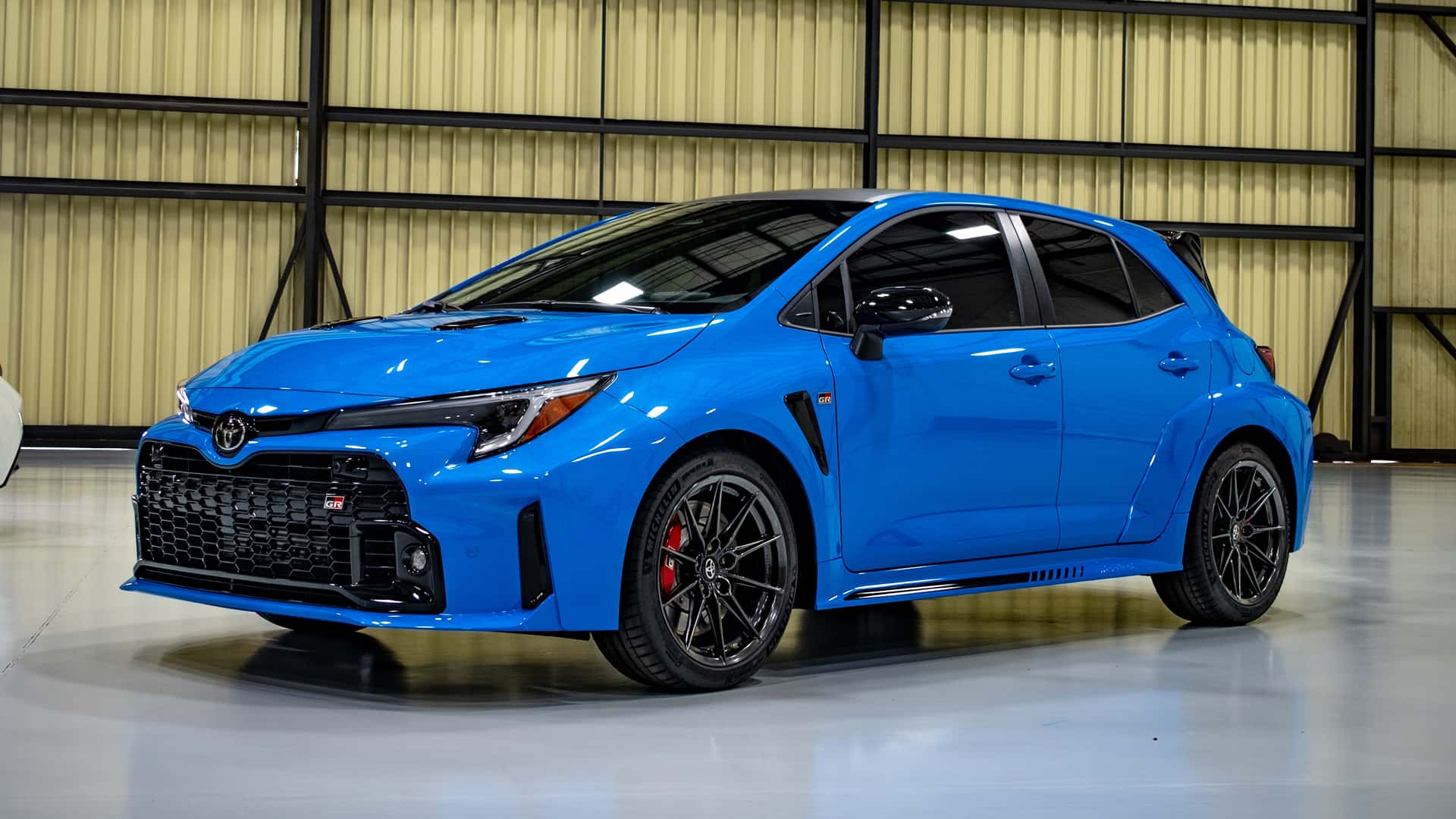
1. Toyota Corolla
The Toyota Corolla’s reputation for longevity and affordability isn’t just anecdotal; it’s backed by decades of real-world performance. One reason the Corolla stays cheap to maintain is the exceptional quality control Toyota applies to its manufacturing process.
The company’s philosophy emphasizes building cars that require minimal intervention, which means parts are designed to last longer, and failures are less frequent.
Many Corollas manufactured in the early 2000s or even late ’90s are still on the road today, proving the durability of this model. This reliability directly translates to lower maintenance costs because fewer unexpected repairs are needed, allowing owners to stick to routine servicing.
Another important aspect is Toyota’s conservative approach to technology. Unlike many manufacturers that chase the latest innovations, Toyota often prioritizes proven, simple technology, especially in their economy cars. The Corolla’s engines are generally naturally aspirated and avoid the complexity of turbocharging or direct injection in older models.
This simplicity reduces the number of parts that can break or malfunction. For example, the engine’s timing chain or belt, cooling system, and ignition components are straightforward and easy to access, which lowers labor costs when repairs are necessary.
The availability of aftermarket parts is another cornerstone of the Corolla’s affordability. Because the Corolla is one of the best-selling cars globally, there is a vast ecosystem of suppliers producing quality replacement parts at a fraction of the cost of OEM components.
This ecosystem includes everything from brake pads to suspension components, giving owners a wide range of options to keep costs down without compromising quality. Many mechanics are familiar with the Corolla’s layout, meaning they can perform repairs efficiently, further reducing labor charges.
Lastly, Toyota’s extensive dealer and service network is a major advantage. Even in less populated areas, owners can find technicians trained specifically on Toyota vehicles, ensuring repairs are done correctly the first time.
Moreover, the Corolla’s fuel efficiency, combined with its use of regular gasoline and minimal specialized fluids, contributes to an overall lower cost of ownership. These combined factors make the Toyota Corolla one of the most cost-effective high-mileage cars on the market.
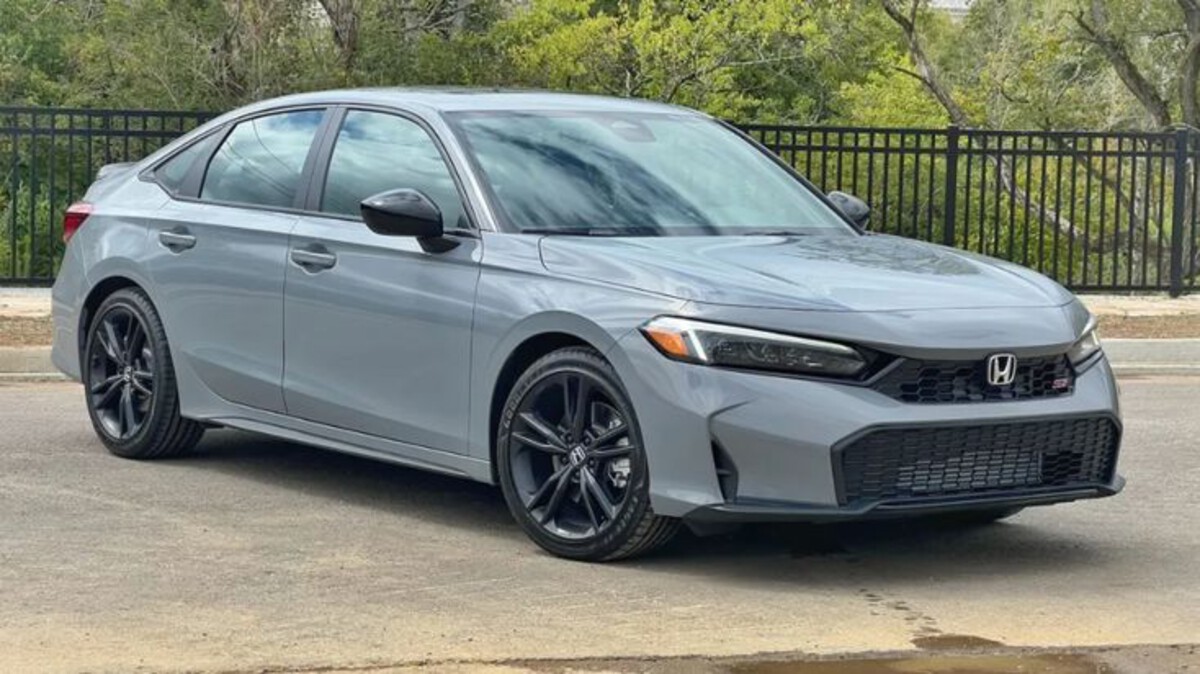
2. Honda Civic
The Honda Civic is another stalwart of reliability and cost-efficiency that continues to impress drivers even after the odometer spins past 150,000 miles. Honda’s engineering philosophy has long centered on creating efficient, robust engines that balance performance with longevity.
The Civic’s inline-four engines, for example, have been designed to be mechanically simple, yet resilient. Many of these engines require little more than routine oil changes, spark plug replacements, and timing belt changes to keep running smoothly for years.
What sets the Civic apart in terms of maintenance is Honda’s commitment to parts availability and affordability. Like Toyota, Honda has a vast global footprint, which means that parts for the Civic are produced in massive quantities and are widely distributed.
This competitive parts market drives prices down and ensures that components such as alternators, starters, fuel pumps, and brake parts remain accessible and inexpensive. This contrasts sharply with niche or luxury vehicles, where parts scarcity can inflate costs dramatically.
Moreover, the Civic’s mechanical layout is user-friendly for both professionals and DIY enthusiasts. The engine bay is relatively uncluttered, and components are designed with maintenance in mind.
For instance, replacing the timing belt, a crucial maintenance item in many Civics, is a procedure that is well documented and familiar to many mechanics.
This reduces the time spent in the shop and thus the labor costs. Additionally, Civics benefit from their robust suspension and drivetrain parts, which can last well beyond 100,000 miles if not abused, lowering replacement frequency.
In terms of fuel economy, the Civic’s efficient engine design keeps running costs low. Unlike some competitors that require premium fuel, most Civics perform well on regular gasoline, which reduces ongoing fuel expenses.
Furthermore, the car’s lightweight construction means less strain on components such as tires and brakes, extending their lifespan. Combined, these factors make the Honda Civic a favorite for high-mileage drivers seeking a reliable and affordable vehicle.
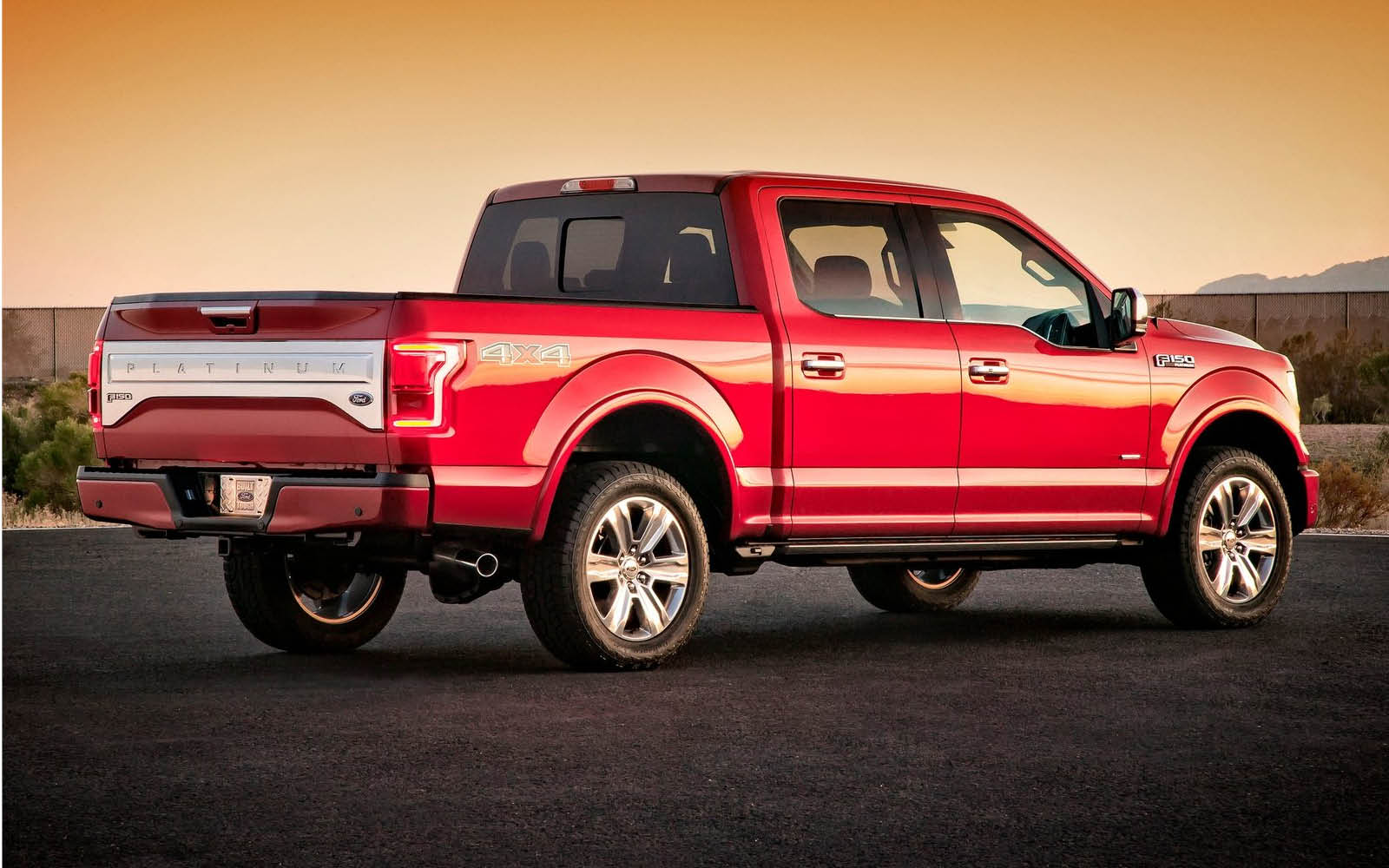
3. Ford F-150 (Older Models)
The Ford F-150, America’s beloved pickup truck, is a somewhat surprising inclusion on the list of cheap-to-maintain high-mileage vehicles, especially considering trucks often come with higher upkeep costs.
However, older F-150s — typically those produced before the 2010 redesign — have earned a reputation for durability and straightforward mechanical design. Many of these trucks come with naturally aspirated V8 engines that are robust, simple, and easier to repair compared to the modern turbocharged engines that dominate the market today.
A significant factor in the F-150’s maintainability is the truck’s massive market penetration. Because millions of F-150s have been sold over decades, aftermarket support is enormous, with countless parts available at competitive prices. Whether it’s suspension components, brake systems, or engine parts, owners rarely struggle to find affordable replacements.
The truck’s popularity among commercial fleets and work drivers also means that many independent repair shops have extensive experience with these models, translating to lower labor costs and more affordable maintenance.
Another advantage of the older F-150 is its mechanical simplicity compared to today’s highly computerized vehicles. The engines, transmissions, and drivetrains are largely mechanical, reducing the number of electronic components that could fail or require expensive specialized tools to diagnose.
This simplicity means that routine maintenance tasks like oil changes, brake jobs, and transmission fluid replacements are generally straightforward and affordable.
Finally, the truck’s rugged build quality means it can handle heavy use without rapid deterioration of vital systems. Many F-150 owners report reaching 200,000 or even 300,000 miles with minimal major repairs when the vehicle is properly maintained.
Although fuel economy is not a strong point, the low maintenance costs, combined with the truck’s utility and availability, make the older Ford F-150 a surprisingly economical choice for high-mileage drivers.
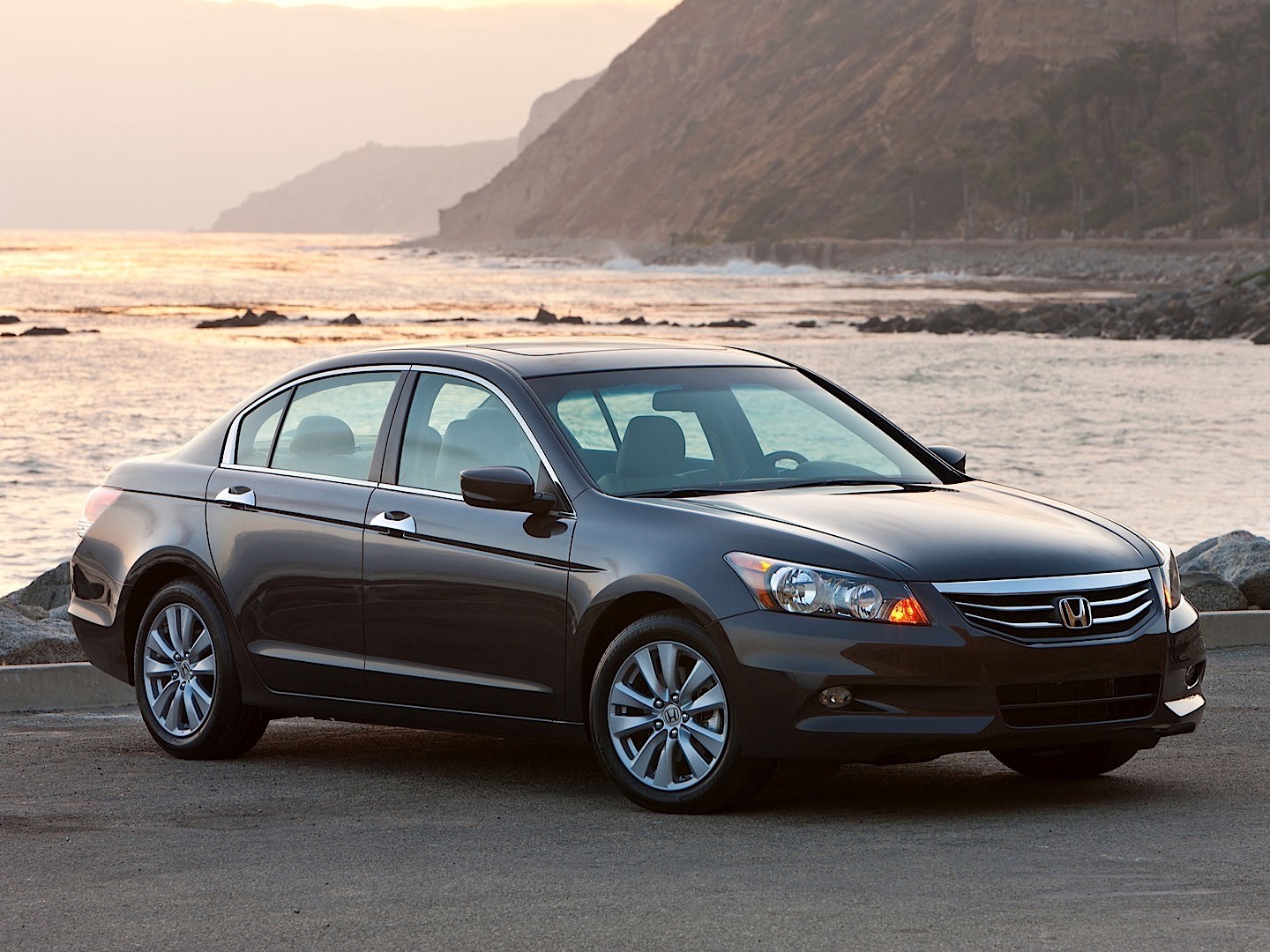
4. Honda Accord
The Honda Accord is often regarded as a step up in size and comfort from the Civic, but it shares many of the same attributes that contribute to low maintenance costs at high mileage.
The Accord’s engines, available in both four-cylinder and V6 variants in older models, are known for their robustness and relatively simple design. Unlike many competitors, the Accord typically avoids complex forced induction systems, relying instead on naturally aspirated engines that are less prone to expensive failures.
One reason the Accord stays affordable to maintain is its widespread popularity, which ensures a steady supply of replacement parts and knowledgeable mechanics.
Many of the components are interchangeable across different Honda models, meaning parts costs are kept down by scale. Additionally, the vehicle’s design favors ease of maintenance; components such as the timing belt, water pump, and alternator are accessible, minimizing labor time and associated costs.
The Accord’s build quality and attention to corrosion resistance mean that these vehicles often avoid expensive body repairs related to rust or degradation, which are common in older cars.
This durability extends to the suspension system, which, when regularly inspected and maintained, can last a long time without costly replacements. Brake systems and tires also tend to wear evenly and predictably, allowing owners to budget for replacements well in advance.
Fuel efficiency is another benefit of the Accord, particularly the four-cylinder models, which helps to offset some costs associated with aging vehicles.
The car’s smooth ride and solid handling encourage owners to maintain the suspension and steering systems properly, further prolonging the vehicle’s life. Overall, the Honda Accord offers a compelling blend of comfort, reliability, and low-cost maintenance, making it an excellent choice for high-mileage ownership.

5. Subaru Outback (Older Models)
The Subaru Outback holds a unique place in the high-mileage market due to its standard all-wheel-drive system, which makes it especially popular in areas with adverse weather or rugged terrain.
While AWD systems often mean more complexity and potential repair costs, older Outbacks — particularly those from the early 2000s — have earned a reputation for lasting durability and manageable maintenance expenses when properly cared for.
One of the standout features of the Outback is Subaru’s boxer engine, which is compact and balanced. While boxer engines have specific maintenance needs, such as careful attention to head gaskets and valve adjustments, their design also means a lower center of gravity and less vibration, which can extend component life.
Subaru’s conservative approach to engine tuning in older models avoids the pitfalls of high-stress, turbocharged systems that plague some competitors with expensive repairs.
The parts availability for Subaru vehicles is solid, especially for common repairs like brake jobs, suspension parts, and engine components. Because the Outback is popular in certain regions, many mechanics specialize in Subaru maintenance and repairs, which helps keep labor costs reasonable. Additionally, the car’s chassis and suspension are designed for durability, with many components lasting well beyond 100,000 miles if serviced regularly.
Though the AWD system can mean slightly higher fuel consumption and potentially more drivetrain maintenance, many owners find that the safety and performance benefits outweigh these costs. The Outback’s ability to handle varied conditions while maintaining low repair bills makes it a standout choice for high-mileage drivers who need a reliable and versatile vehicle.
5 High-Mileage Cars That Don’t Stay Cheap to Maintain
When you’re shopping for a high-mileage car, the assumption is simple: save now, save later. But some vehicles flip that script. Sure, they’ll clock well over 200,000 miles without blinking—but keeping them running like clockwork might bleed your wallet dry.
Beneath their reputation for endurance, these cars hide maintenance costs that quietly pile up over time. In this article, we’re pulling back the curtain on five high-mileage champions that don’t stay cheap once you factor in repairs, parts, and the all-too-frequent trips to the mechanic.
1. BMW 3 Series (Especially Older Models)
The BMW 3 Series is widely regarded as a sporty, luxurious compact sedan with impressive driving dynamics. However, when it comes to high-mileage ownership, the 3 Series can quickly become expensive to maintain. One major reason is the inherent complexity and precision engineering of BMW engines and electronics.
Older 3 Series models, particularly those from the late ’90s to early 2000s, often feature inline-six engines with advanced technologies for their time—such as variable valve timing (VANOS) and intricate fuel injection systems—that require specialized knowledge and expensive parts to service properly.
When these systems start to wear out after 100,000 miles or more, repairs tend to be costly, especially when multiple components fail in succession, which is common in aging luxury cars.
Moreover, BMWs often use premium materials and specialized components that are not only costly to replace but also difficult to source outside of official dealers or specialty shops. Even basic parts like control arms, suspension bushings, and cooling system components can carry a premium price tag compared to mass-market vehicles.
The 3 Series also uses complex electronics to manage everything from engine performance to climate control and infotainment systems.
These systems tend to degrade over time, causing a cascade of faults that can be time-consuming and expensive to diagnose. Many owners report issues with the car’s cooling system, including water pumps and radiators, which are critical for engine health but notoriously prone to failure in these models.
Labor costs for BMW repairs add another layer to the expense. Due to the tight engine bays, sophisticated wiring harnesses, and the need for proprietary diagnostic tools, even routine maintenance tasks can take longer and require more skill than average.
This increases the cost of service appointments significantly. Additionally, BMW specialists typically charge a premium for their expertise, and independent shops unfamiliar with the brand may be reluctant to work on these vehicles. This scarcity of affordable, skilled mechanics translates directly into higher repair bills for owners, making the 3 Series an expensive proposition once it accumulates high mileage.
Finally, the cost of maintenance is often compounded by the expectations of BMW owners, who usually prioritize keeping their cars in top condition. This means they often replace parts preemptively or use high-end fluids and lubricants recommended by the manufacturer, further driving up costs. Although the driving experience is widely praised and the car can last a long time if cared for meticulously, the 3 Series’ status as a luxury sport sedan means it rarely stays cheap to maintain after the 150,000-mile mark.
2. Audi A4 (Older Generations)
The Audi A4 is a compact luxury sedan known for its all-wheel-drive system and sophisticated interior. However, high-mileage A4s tend to be quite expensive to maintain due to a combination of engineering complexity and parts cost. The car’s drivetrain, particularly the Quattro all-wheel-drive system, is a major contributor to maintenance expenses.
The transfer case, differentials, and driveshafts in these systems experience considerable stress over time and require regular service and occasional replacement. When these components begin to fail, repairs can be costly, often involving labor-intensive processes that few independent shops are equipped to handle.
Engine issues are another common concern in older Audi A4 models, especially those equipped with turbocharged four-cylinder engines. Turbochargers add performance but also complexity and stress to the engine components. Over time, worn turbo seals, clogged intercoolers, and failing boost control sensors can lead to significant repair bills.
Additionally, the timing belt and associated components (tensioners, water pumps) require careful maintenance; if neglected, failure can cause catastrophic engine damage, necessitating expensive rebuilds. Audi engines are also known for oil consumption issues and head gasket leaks as mileage climbs, which add to the long-term ownership costs.
Electronics and interior systems further add to the A4’s maintenance burdens. Audi’s attention to technological features means that power windows, advanced infotainment units, and electronic climate controls can malfunction as the car ages.
Diagnosing these electrical gremlins often requires specialized diagnostic tools, and repairs may involve expensive modules or wiring harness replacements. Older A4s also have a reputation for suspension components wearing out prematurely, particularly in the front end, which leads to costly replacements of control arms, bushings, and struts.
Lastly, the general luxury car premium applies: parts and labor for an Audi are almost always more expensive than for non-premium brands. Even consumables like brake pads and rotors can cost double or more compared to economy cars.
Coupled with the frequent need for repairs due to the car’s engineering and component wear, the Audi A4 is a high-mileage vehicle that doesn’t remain cheap to maintain. For owners prioritizing a stylish, sporty ride, the costs can be justified, but it’s important to be prepared for these expenses as the miles add up.
3. Mercedes-Benz E-Class (Older Models)
Mercedes-Benz has long been synonymous with luxury, comfort, and engineering excellence. However, the E-Class, especially models from the 1990s and early 2000s, is infamous among enthusiasts and owners alike for becoming costly and complicated to maintain once it crosses into high mileage territory.
The engineering complexity that makes the E-Class comfortable and powerful also leads to expensive maintenance. The car’s many electronically controlled systems—from adaptive suspensions and automatic transmissions to climate controls—are all potential points of failure as the car ages.
The E-Class’s air suspension system, which provides a smooth ride, is a common source of headaches and expense in older models. The air bags, compressors, and associated sensors often wear out or leak, requiring replacement or repair that can easily run into the thousands of dollars.
The complexity of these systems means that DIY repairs are typically out of reach for most owners, and specialized shops must be engaged, increasing labor costs. Even routine maintenance is more costly on the E-Class due to the car’s tight engine bay and intricate layout, which makes tasks like changing spark plugs or belts more labor-intensive.
Engine and transmission repairs also add to the cost. While Mercedes-Benz engines are generally durable, components like fuel injectors, mass airflow sensors, and ignition coils tend to fail after prolonged use. The automatic transmissions in many E-Class models, especially the 5-speed units, are known for their sensitivity and high repair costs if not maintained perfectly.
Transmission rebuilds or replacements often come with sticker shock, sometimes rivaling the cost of the car itself in the used market. Additionally, coolant system failures such as radiator or thermostat replacements are common and costly due to the specialized parts involved.
Finally, Mercedes-Benz’s brand reputation means that parts prices are inherently higher compared to mainstream vehicles. Even small components like window regulators or door locks are expensive to replace, and many dealers charge premium prices for service.
Owners who want to keep their E-Class running reliably past 150,000 miles must be prepared for ongoing investment, both in terms of maintenance and occasional major repairs. The driving experience and prestige are often worth it to enthusiasts, but for budget-conscious high-mileage drivers, the E-Class is often a maintenance nightmare.
4. Land Rover Range Rover (Older Models)
The Land Rover Range Rover, while iconic for its off-road capability and luxurious appointments, is notoriously expensive to maintain, especially when it reaches high mileage.
Range Rovers are packed with sophisticated technology and electronic systems, including air suspension, traction control, and advanced drivetrain components designed for rugged terrain. Unfortunately, these systems are often prone to failure after extended use, and their complexity means repairs require expensive parts and highly specialized labor.
One of the main maintenance headaches for Range Rover owners is the air suspension system, which is essential to the vehicle’s ride quality and off-road performance. Air springs, compressors, and height sensors frequently malfunction on older models, leading to costly repairs.
This is compounded by the fact that Range Rover parts tend to be very expensive, with many components needing to be imported or sourced from specialized suppliers. Labor costs are also elevated due to the complexity and weight of the vehicle, making simple repairs or replacements a time-consuming ordeal.
Engine and transmission issues also contribute to the high cost of ownership. Many older Range Rovers are equipped with V8 engines that, while powerful, are complex and prone to issues such as oil leaks, head gasket failures, and fuel system problems.
The automatic transmissions, which are sophisticated and heavily computerized, require regular maintenance and can be costly to repair or replace. Timing chain problems, coolant leaks, and sensor failures are common, and diagnosing these issues often requires dealer-level diagnostic tools.
Electronics throughout the Range Rover’s cabin also tend to degrade over time. From infotainment systems and navigation units to power windows and locking mechanisms, many electronic features fail or become erratic in high-mileage vehicles. Replacing or repairing these modules can be prohibitively expensive.
Furthermore, the luxury nature of the vehicle means that routine maintenance items, such as brake pads, tires, and filters, come at a premium price. Collectively, these factors make owning a high-mileage Range Rover a costly proposition and a cautionary tale for those not prepared for extensive upkeep.
5. Jaguar XJ (Older Models)
The Jaguar XJ is a classic luxury sedan that combines British elegance with powerful performance. However, older XJ models, particularly those from the ’90s and early 2000s, are infamous for becoming extremely expensive to maintain as they rack up miles. Jaguar’s engineering during this era was sophisticated but prone to reliability issues, particularly with electronics, suspension components, and engine seals. Owners often find that routine maintenance escalates into costly repairs, driven by the car’s complexity and the premium nature of its parts.
Electronics are one of the biggest challenges in aging Jaguars. The XJ features advanced (for its time) electrical systems controlling everything from climate control and lighting to engine management and safety features.
Unfortunately, these systems are prone to failures and glitches that require detailed diagnostics and replacement of expensive modules. Wiring harnesses often develop faults due to age-related wear or corrosion, which can lead to intermittent problems that are difficult and expensive to pinpoint.
Suspension components in the Jaguar XJ also require close attention as the vehicle ages. The XJ’s independent suspension and air ride system are designed to deliver a smooth and controlled ride but are complex and prone to failure. Air suspension bags leak, compressors fail, and control arms and bushings wear out, resulting in costly replacements. Due to the car’s weight and design, these repairs are labor-intensive and frequently require specialty parts that are difficult to source.
Lastly, engine and drivetrain maintenance on the Jaguar XJ is costly. Older models used V8 and inline-six engines that often suffered from oil leaks, head gasket failures, and cooling system issues as mileage climbed. Timing chains, valve seals, and fuel system components also tend to wear out faster than expected, especially if maintenance was deferred.
Additionally, Jaguar parts tend to be pricey, and many independent mechanics hesitate to work on these cars due to their complexity. All these factors contribute to the Jaguar XJ’s reputation as a beautiful but expensive car to maintain at high mileage.
ALSO READ: 5 Cars With the Most Accurate Speedometers and 5 Off by 8 MPH
In conclusion, the journey of owning a high-mileage car can be vastly different depending on the make, model, and engineering philosophy behind the vehicle. As we have explored throughout this article, certain cars stand out as champions of longevity and affordability, while others become financial challenges that require ongoing investment and care.
The five vehicles highlighted for staying cheap to maintain demonstrate how simplicity, reliability, and widespread parts availability combine to create a durable, cost-effective ownership experience. Brands like Toyota and Honda exemplify this approach, with models such as the Corolla and Civic continuing to deliver reliable transportation with surprisingly low repair costs even as they cross the 200,000-mile mark.
These reliable vehicles benefit from a blend of factors: uncomplicated engines, solid manufacturing quality, extensive aftermarket support, and widespread mechanic familiarity. Their designs emphasize ease of maintenance, with many parts engineered for longevity and repair procedures optimized for efficiency.
This ensures that drivers can keep these cars on the road longer without being burdened by large repair bills or the need for frequent, expensive services. Owners often find peace of mind knowing that routine maintenance items like brakes, suspension components, and timing belts are affordable and accessible, allowing them to focus on enjoying their vehicle rather than worrying about unforeseen expenses.
Conversely, the luxury and performance-oriented vehicles discussed reveal the challenges that arise when advanced technology and premium materials are involved. Cars like the BMW 3 Series, Audi A4, Mercedes-Benz E-Class, Land Rover Range Rover, and Jaguar XJ, while thrilling to drive and aesthetically pleasing, often carry hidden costs that grow with mileage.
Their complex systems—ranging from air suspensions and turbocharged engines to intricate electronic controls—require specialized diagnostics, labor, and parts that drive up maintenance expenses. These factors mean that even routine repairs can become prohibitively expensive, and major component failures can quickly drain a vehicle owner’s budget.
The high cost of maintaining these luxury vehicles is compounded by the fact that many components are proprietary, meaning parts availability is limited and replacements are costly. Labor is also a significant expense, as fewer independent mechanics are equipped or willing to work on these sophisticated systems, pushing owners to rely on dealerships or specialist shops with premium rates.
For owners of these vehicles, high mileage often translates into a constant cycle of repairs and preventive maintenance that can overshadow the initial enjoyment of the car. While the driving experience remains rewarding for enthusiasts, the financial realities should be carefully considered before committing to ownership of such cars at high mileage.
This dichotomy between affordable and expensive high-mileage vehicles underscores the importance of research, planning, and understanding one’s priorities when purchasing or maintaining a car. While the allure of luxury, style, and performance is undeniable, it must be balanced against the practical considerations of upkeep and long-term cost.
For buyers focused on reliability and low ownership costs, vehicles like the Toyota Corolla, Honda Civic, and Ford F-150 offer peace of mind and financial predictability. For those who prioritize driving experience and refinement, the luxury segment provides unmatched comfort and technology, but at a cost.
Ultimately, every car owner should weigh the trade-offs between initial purchase price, anticipated maintenance costs, and desired vehicle attributes. Understanding which vehicles are engineered to last cheaply and which tend to become financial liabilities at high mileage can empower better decisions.
Maintaining a high-mileage car isn’t just about routine oil changes and tire rotations—it’s about managing the complex realities of wear and tear, parts degradation, and mechanical failures in a way that aligns with your budget and lifestyle. By knowing what to expect, owners can proactively maintain their vehicles, seek reliable mechanics, and plan financially for repairs.
Whether you’re looking for a dependable commuter car or a luxury sedan that dazzles, recognizing the maintenance realities of high-mileage vehicles is crucial. The right choice can mean years of hassle-free driving and manageable expenses, while the wrong one can lead to frequent shop visits and costly surprises. This article has laid out clear examples of both ends of the spectrum, equipping you with the knowledge to navigate the world of used cars with confidence and clarity.

